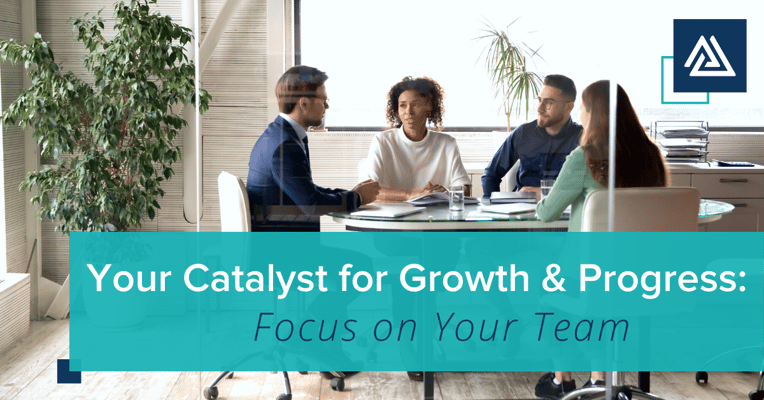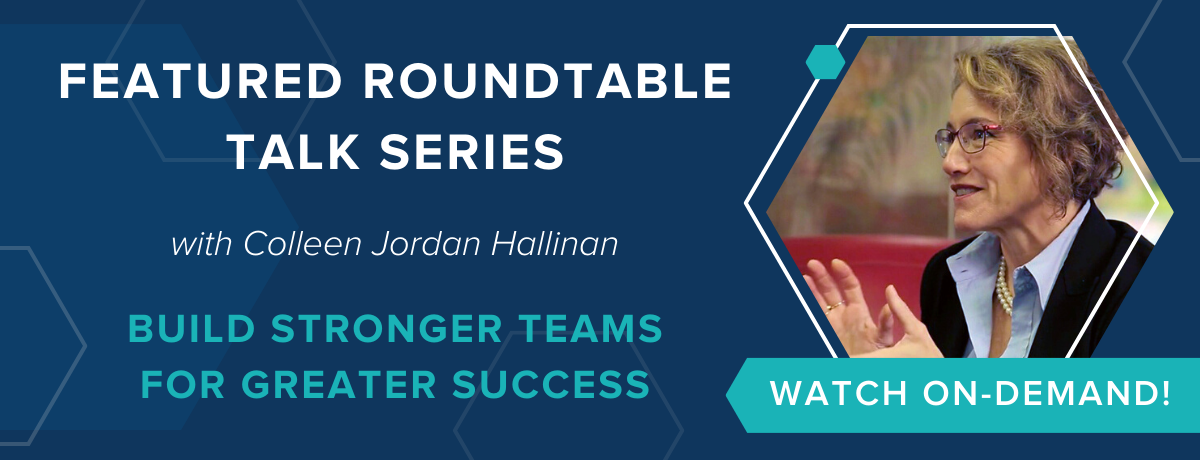Blog
Your Catalyst for Growth and Progress: Focus on Your Team

/Blog%20-%20Catalyst%20for%20Growth.png?width=1200&height=628&name=Blog%20-%20Catalyst%20for%20Growth.png)
Editor’s Note: We originally posted this article by Colleen Jordan Hallinan in 2018. Since then, the need for business owners to focus on building the right team in order to grow and establish sustainability has only increased. And so, five years later, Colleen’s guidance on nurturing your team, evolving your own role, and adjusting your mindset to cultivate a stronger, more capable group of professionals is just as relevant.
Successful, ambitious, and conscientious advisors ask questions like: How do I create next-level growth? What will it take to build a firm that delivers an extraordinary experience to my clients and their families? How am I going to achieve my own next-level life?
The answer starts with another strategic question: What has to happen to give you the freedom to focus on precisely those aspirations?
Your catalyst for growth in all three areas lies in the talents of your team. Make your A players your #1 priority and you’ll have an alchemy that expands your available time and transforms exhaustion and obstacles into more space and energy.
/A%20Players.png?width=632&height=243&name=A%20Players.png)
But it doesn’t come without a cost. The cost is personal sacrifice of current habits, beliefs, ego, and behavior, plus an investment of more time now to blend together the ingredients for that alchemy. Your results will come from your ability to:
- let go and stay focused on the big picture,
- place yourself in service to your team, and
- treat them like your best clients.
Let Go … So You Can Focus on the Big Picture
Stay big picture. Narrow down your role to Chief Inspiration, Direction, and Alignment Officer. You built this firm – where do you want it to go? What does it look like when you get there? Give your people that vision. What do you have to create, provide, or deliver to get there? That’s your mission. Break it down so that each team member owns a part of the mission. Now, step aside and let them come up with their own ways to achieve it.
Give up your pet ways: your experience, your knowledge, the way you solve problems and create. Here’s a thinking exercise to put this into perspective: What does it feel like when the buck stops with you? What does that responsibility feel like? To what extent are you willing to go to keep your commitments to your clients? THAT is the feeling you give up, the feeling that you must transfer to your people; that feeling is the essence of ownership and will guide your A Players to do their very best. They will develop their own experience and knowledge (just like you did), and you can stay focused on the big picture.
Give them a career path. What can your best people expect from you when they deliver excellence? How does their ownership of commitment and progress earn them ownership in the firm? Create the ownership path by putting in the proper infrastructure, compensation, and equity systems to support that expectation.
Serve Your Team
Place yourself at your team’s service, versus the other way around. If you do that, they will carry you AND your clients. You’ve heard of servant leadership – making sure that your team members’ highest-priority needs are being served. Perfectly suited to measuring this effort are Gallup’s Q12 statements. The Q12, based on more than 30 years of research, measure the actionable issues for leaders that drive team satisfaction, loyalty, and pride, which lead to more productivity, profitability, client engagement and employee retention. If you’re doing it right, your team members say “At work, I have the opportunity to do what I do best every day … my opinions seem to count … my supervisor cares about me as a person…the mission or purpose of my company makes me feel my job is important.”
Focus on their development and support. You know your people and what their goals are. Everyone, especially you, knows each individual’s strengths and you provide opportunities for them to grow. They can count on your ear when they encounter obstacles or a serious personal issue, and you make sure they have the right tools and access to the resources they need. And you get out of their way.
Your People are Your Best Clients
What is your client retention rate? Are you proud of it? You should be. Your care, attention and support – these things have made your clients fiercely loyal.
What is your employee retention rate? Go ahead, do the math: current employees with you more than two years, divided by the all the employees you’ve ever hired. Or maybe you haven’t hired because you imagine “management” an intolerable chore.
It’s not that complicated. Your people are as important as your best clients, if not more so. You can develop a fiercely loyal, committed team by using the skills that made you the successful advisor you are today. To put this concept into perspective: you are at your best behavior in a client meeting, right? How do you work with clients? How do you speak to your best clients? How is your tone? You probably spend a lot of time in discovery, digging to find out what drives them, contemplating how all the things they’ve told you fit together, and thinking about what it will take to draw them in and keep them forever. You measure the words that come out of your mouth carefully. You never snap or show frustration if they've misunderstood you, or if they want to take an action with which you disagree. Instead, you pause and discover how this developed and how you might help them get over that obstacle by asking questions and getting to the bottom of their expectations and understanding. You take the time needed to ensure the client understands what needs to happen next and why. Use those skills with your people.
Know your team. Unlike your clients, your team members are interacting with you and each other on a daily basis in an interdependent web. A good team is like a beautifully completed puzzle. You’ve identified the edges, the shapes of the pieces and the patterns. They all fit together to create the big picture, but you need to SEE the shapes. We all have different values and beliefs, natural talents and modi operandi (MOs). Learn to recognize and appreciate where your people excel, where they don’t excel, what makes them tick, what energizes them, what saps their energy. Accept that there are certain areas where you excel, and areas where others excel. And even if you’re both able to achieve the same goals, someone else’s MO might be more effective. Once we recognize and appreciate this, we develop the trust it takes to let go.
Watch your shadow. When you are not aware of your talents and MO, you may have a tendency to misuse them – it’s like a shadow others see, but you don’t. As a result, two people with different talents might end up in conflict. When you and your team members become aware of and appreciate your respective talents, you can wield them like personal power tools, strategically, to leverage yourselves and each other. This is when your talents become strengths. And with what Gallup defines as a strength: “the ability to provide consistent, near-perfect performance in a given activity,” you and your team will perform the alchemy that delivers more time, space and energy.
Finally, if you’re the next generation at your firm, regardless of whether your leader is focused on you, step up. You are not only the future of the firm, you ARE the firm. You need to own your role before you own the firm. Sit down with your leader and ask her what has to happen for you to gain her trust so she can let go. Flag yourself as an A Player and use these tips to guide teamwork and productivity. In the end, the results will be good for business and good for your career—wherever the future may take you.
Colleen Jordan Hallinan started Qii Consulting after 30 years in the financial services industry. As an advisor, she built a team designed to tap into each individual’s unique qualities and strengths. After retiring from the industry, Colleen took these team-building mindsets and methods and founded Qii where she shares her experience and techniques to help other advisory businesses tap into their own teams’ strengths and find their catalyst for growth.
